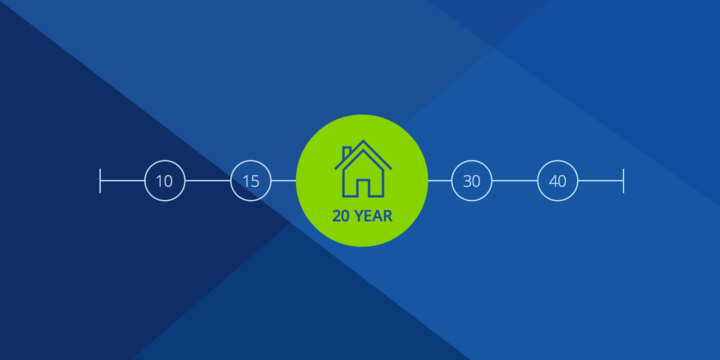7 min read
What is a Closing Disclosure?


Written by Alycia Lucio on July 18, 2024
A closing disclosure is a five-page legal document that provides a comprehensive overview of your final loan details, including terms, costs, projected monthly payments and a summary of the transaction. Lenders are legally required to provide a closing disclosure at least three business days before your scheduled closing date to give you time to review the total cost and fees associated with your mortgage loan before you go to the closing table.
The importance of your closing disclosure
A closing disclosure is really a protection for you, as the mortgage borrower, so that you understand the final and total cost of the mortgage, and how much cash you will need to bring to closing. If you have questions or see a discrepancy between your understanding of the fees or charges, based on the Loan Estimate, reach out to your lender as soon as possible. The closing disclosure provides you with important details about fees and charges on your mortgage before you go to the closing table, such as:
- Full cost transparency, from the loan amount and interest rate, to closing costs and other expenses
- Protection against errors and discrepancies, as it is intended to provide you time to ensure the information is accurate
What is in the closing disclosure?
All closing disclosures include five pages with key sections that document the final loan terms and closing costs for your mortgage. Here’s a closer look at what you’ll find in the closing disclosure:
Loan terms
The first page of your closing disclosure will contain specific information about your mortgage loan, such as the loan amount, monthly payment (principal and interest), and interest rate. It will also include any applicable prepayment penalty and balloon payment information.
Projected payments
The projected payments section is also on the first page of the closing disclosure document. This section summarizes your projected monthly payments between one to seven years and eight to 30 years. The total payment is broken down to show the amount that will go towards principal, interest, mortgage insurance, and escrow each month. Escrow costs will be an estimate as they may change over time. The breakdown will show you whether property taxes, homeowners insurance, or other costs like homeowner’s association (HOA) dues are included in escrow.
Costs at closing
The document's first page also includes a costs at closing section. This section contains your upfront closing costs, including your down payment, lender credits, and any fees for the property transfer of ownership. This total tells you exactly how much you must pay out of pocket at closing. Use Zillow's closing cost calculator to estimate the fees you'll pay at closing.
Loan costs
Your closing cost details begin on the second page of your closing disclosure. Loan costs is the first section on this page, and it includes the additional costs of your mortgage loan, such as application fees, underwriting and origination fees, and any applicable mortgage points. This section will also list other fees, denoted as:
- Services Borrower Did Not Shop For: such as appraisal, credit report, tax monitoring, flood determination, flood monitoring, and tax status research fees
- Services Borrower Did Shop For: such as pest inspection, surveying, and associated title service fees
Other costs
The other costs section is also on the second page, and covers just what you’d think — all the other costs associated with closing on your mortgage. This includes the cost of the home inspection, transfer tax, and recording fees. It also includes homeowners insurance premiums, HOA fees, home warranty fees, commissions, and lender credits. These will factor into your total closing costs.
Calculating cash to close
The cash-to-close section appears as a table on the third page of the closing disclosure. This table allows you to see changes from your initial loan estimate to the final. You’ll find your closing costs, including any pre-paid credits and deposits like your down payment. It’ll also show the calculations of your closing fees and any seller concessions.
Summaries of transactions
The summaries of transactions section is also on the third page of the closing disclosure and gives a comprehensive view of the transaction between you and the seller. Here, you’ll see details of your total costs, what you’ve already paid, the seller’s total costs, and any adjustments made.
Loan disclosures
The loan disclosure section is located on the fourth page of the document under the “Additional Information About This Loan” category. Under loan disclosures, the legal terms of your home loan are displayed in boxes and marked where applicable to your specific mortgage agreement. This includes:
- Mortgage assumptions
- Demand features
- Late and partial payments
- Negative amortization
- Security interest
- Escrow account information
Loan calculations
Loan calculations are presented on the fifth page, demonstrating the total amount you’re agreeing to pay for the life of your new mortgage. These calculations include:
Total of payments: the dollar amount you will have paid after making all principal, interest, mortgage insurance and loan costs.
Finance charge: the dollar amount the loan will cost you in interest over the loan term.
Amount financed: the loan amount after paying your upfront closing costs.
Annual percentage rate (APR): the cost of borrowing over the loan term, expressed as a rate. This is different from your interest rate.
Total interest percentage (TIP): the total amount of interest you’ll have paid over the loan term, shown as a percentage of your loan amount.
Other disclosures
The other disclosures section is to the right of the loan calculations. This section includes several other contract details regarding missed payments, the appraisal, liability after foreclosure, and notes about refinancing and tax deductions.
Contact information
The contact information section is also on the last page of your closing disclosure. Here, you’ll find the personal contact information for all the parties involved in your mortgage loan, such as yourself, a co-signer, a co-applicant, the lender, and any real estate professionals involved.
Confirm receipt
The confirm receipt section is at the bottom of the last page. Here, you’ll sign your name at closing to prove that you received the closing disclosure form and acknowledge the accuracy of the information. If you have a co-applicant, they’ll sign and date the form at the same time.
What is the closing disclosure 3-day rule?
Under the Truth in Lending Act (TILA), lenders must provide borrowers with their closing disclosure at least three business days before their scheduled closing date. The number of days lenders are required to give borrowers in order to review and resolve any problems with their closing disclosures commonly referred to as the closing disclosure 3-day rule or Know Before You Owe (KBYO) rule.
During the three days, you’ll want to compare the closing disclosure to the information in your loan estimate to check for discrepancies before signing off on your new mortgage agreement. This way, you can correct any mistakes and ask questions about items that don’t match the initial terms. As you review the documents, pay close attention to the following:
- The spelling of your name and the names of any co-signers and co-applicants
- The property address
- The loan amount
- The loan terms (monthly payment, interest rates, loan type, etc.)
- All costs and fees
- Whether your lender plans to use an escrow account
Your loan estimate and closing disclosure should look similar. At the beginning of the loan application process, most borrowers choose to lock in their rate to guarantee that it remains the same. The only reason your interest rate may change from the loan estimate to the closing disclosure is if other circumstances arise like changes to your credit, income or assets. Or, if you elect to “float” your rate instead of lock-in. This means risking the rate you received on your loan estimate to see if mortgage rates come down before closing.
Contact your lender immediately if you notice any major discrepancies or have questions. Under the 3-day closing disclosure rule, the lender must allow you another three business days to review the revised version of an updated disclosure if there are changes.
What happens after your closing disclosure?
After you receive the final closing disclosure, you’ll review it and resolve any discrepancies. Once that’s complete, you’re ready for closing day. At closing, you’ll sign additional paperwork to solidify the sale and then receive the keys to your new home.
Closing on a new home can be an exciting and stressful process. To make closing go as smooth as possible, work with a supportive mortgage lender and buyer’s agent who can answer your questions and provide guidance.* Half of homebuyers in a Zillow study said their real estate agent was the most helpful resource throughout their home-buying experience. We can connect you directly with a buyer’s agent on Zillow, or you can use our directory to search and compare agents near you.
*An equal housing lender. NMLS ID#10287
How much home can you afford?
At Zillow Home Loans, we can pre-qualify you in as little as 5 minutes, with no impact to your credit score.
Zillow Home Loans, NMLS # 10287. Equal Housing Lender
Get pre-qualifiedHow much home can you afford?
See what's in reach with low down payment options, no hidden fees and step-by-step guidance from us at
Zillow Home Loans.
Zillow Home Loans, NMLS # 10287. Equal Housing Lender
Calculate your BuyAbility℠
Related Articles
Get a mortgage with Zillow Home Loans
Go from dreaming to owning with low down payment options, competitive rates and no hidden fees. A dedicated loan officer will guide you until you have your keys in hand.

Zillow Home Loans, NMLS #10287. Equal Housing Lender.



